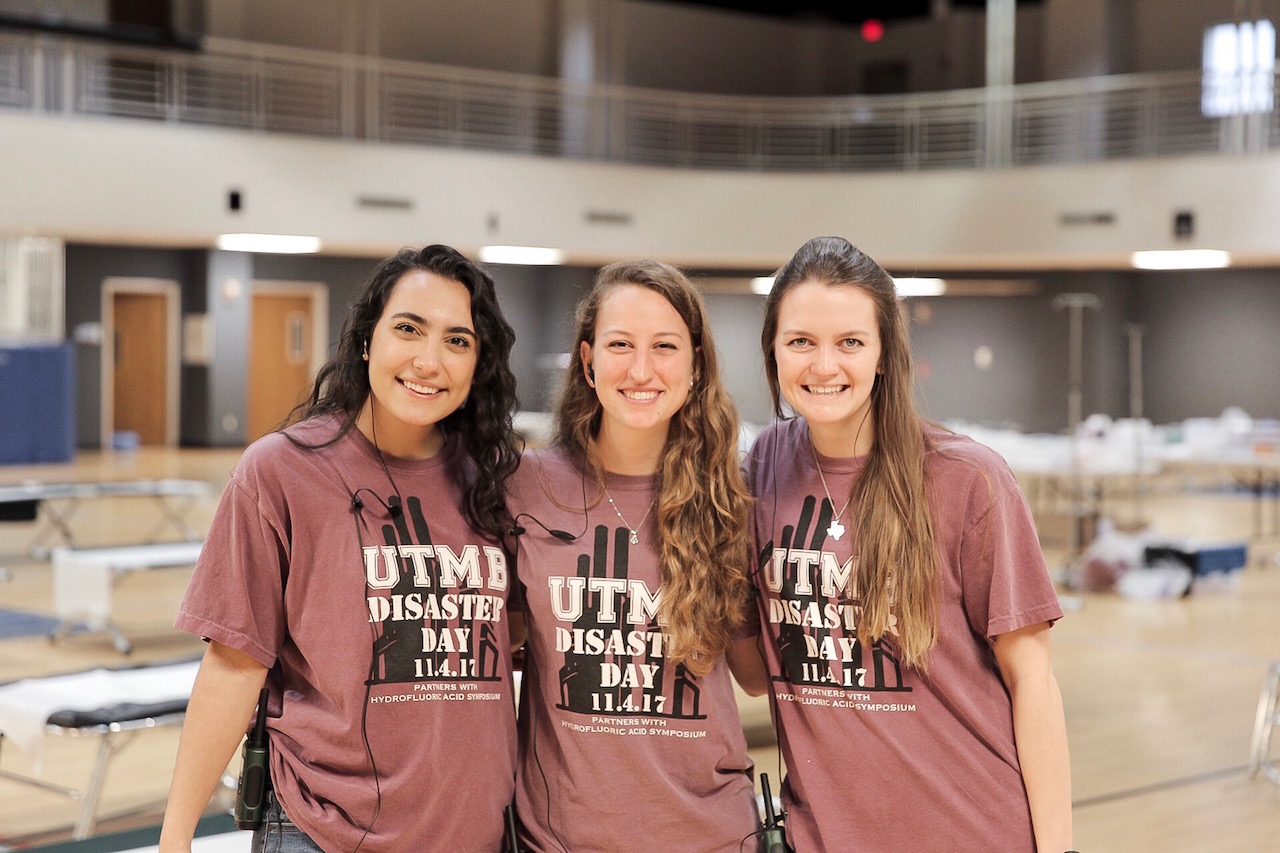
UTMB’s Interprofessional Scholars Program recently hosted its first Disaster Day, a student-led, large-scale simulation aimed at preparing and educating health care professional students on responding to a crisis.
School of Nursing students Casey Schneider, Sophia Hashemi and Madison Lankford collaborated with other schools at UTMB to gather about 200 students and faculty volunteers for the Nov. 4 simulation at Moody Methodist Church in Galveston.
The goal of Disaster Day was to foster interprofessional teamwork and provide the opportunity for the next generation of health professionals to practice skills learned in the classroom and apply them in a simulation of a potentially catastrophic event they could face in the future, said Shelley Smith, UTMB director of Interprofessional Education and Practice. Smith said Disaster Day is an example of interprofessional education espoused in the new IPE2Practice Quality Enhancement Plan underway at UTMB.
In this instance, the simulation was a hydrofluoric acid release caused by the landfall of a tropical storm.
Student organizers of the event worked with the UTMB Hydrofluoric Acid Symposium and UTMB’s Office of Interprofessional Education and Practice to review 40 case studies to make the simulation as realistic as possible.
As part of the event, third- and fourth-year medical and nursing students teamed up as volunteer first responders who “treated” patients affected by the acid release. The patients were student volunteers from all four UTMB schools.
During the simulation, there were four waves of patients with a large variety of diagnoses, such as mental illness, burns, abrasions, a woman in labor and more. As students worked together to treat the patients, faculty members provided instruction and assistance.
Afterward, responders discussed lessons learned during the simulation and faculty provided feedback on the students’ performance.
“During this simulation, students learned about interprofessional communication, the triage system and how to effectively organize their team and prioritize to provide effective health care in the event of an emergency,” Smith said. “The students hope to continue this simulation each year to foster the culture of interprofessionalism at UTMB.”